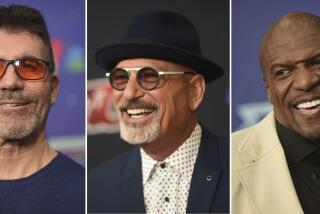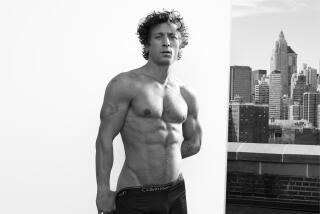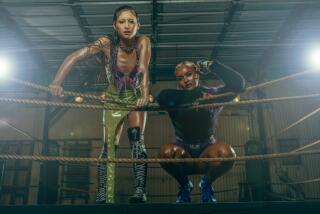The Bottom Line
Tommy Hilfiger, Ralph Lauren and Tom Ford for Gucci aren’t satisfied that their fashions and footwear visibly outfit men from head to toe. These days designers are battling for a less obvious segment of the market.
More specifically, they want their signatures to grace the elastic waistband on men’s underwear. And they’ve been spending millions on sexy, bare-it-all advertising campaigns to lure customers out of their inexpensive BVDs and Fruit of the Looms and into something new.
It’s been 16 years since Calvin Klein put Olympic pole vaulter Tom Hintnaus and, later, rapper-turned-actor Mark Wahlberg in white cotton briefs and boxer briefs, respectively, parading their images on billboards from Sunset Boulevard to Times Square. Back then, customers not only cared about what came between men and their Calvins, but for the first time they could see it.
But today it takes more than an athlete or actor with chiseled abs to sell men’s underwear.
“The cheapest thing in a man’s wardrobe is his underwear, and that’s the one thing that has to fit the best and be the most comfortable,” explains Mike Tawil, co-owner of New York-based 2(x)ist, a fashion underwear brand selling at Saks Fifth Avenue and Barneys New York.
Because men are paying more attention to their bodies, they want their underwear to enhance that fact, adds Tawil. “It has to feel better and be sexy too.”
It also has to be different enough--either through cut, color or crotch treatment--to compete with the hundreds of well-known (and some not-so-well-known) labels that have launched collections in the last few years in the growing $2.3-billion men’s underwear business.
Some of these brands (Generra, Champion, Spalding, Le Coq, Sportif, Fubu) are more recognizable in young men’s departments than down the underwear aisle. Many top designers (Donna Karan, Prada, Versace, Giorgio Armani, Hugo Boss, Dolce & Gabbana, Helmut Lang, Kenneth Cole) selling pricey products--from $30 to $110 for a single pair of briefs--seem more concerned about labels than fiscal logic. Newcomers (Sauvage, 2(x)ist, Papi, Von Dutch, Sabrosos) preach “a roomier seat and more generous pouch proportions” to highly targeted niche markets. Others (Ron Chereskin, Alexander Julian, Guy Laroche) are holdovers from the 1970s and ‘80s who think there is new respectability in briefs and boxers. And don’t count out foreign makers (Hom, Beaufort, Luc La Roche Complice). Heck, even basketball player Michael Jordan and late rock star Jerry Garcia have underwear collections bearing their names.
This need to be a player in the men’s underpants business has taken marketing well beyond strategically placed billboards. For instance, Structure, the men’s retail division of the Limited, launched an underwear collection four years ago with a nationwide model search that now draws more than 20,000 contestants annually.
Designer Ron Chereskin recently sponsored “A Brief Night of Comedy” at a New York comedy club with comics performing in--what else?--Ron Chereskin briefs. Joe Boxer, the company that pioneered fun-to-wear underwear, has its own wacky Web site that promotes “clean fresh underwear” and gets more than 1 million hits a month. Another Web site (https://underneath.com) has a link to the Boxers of the Month Club, an underwear buyers club started by 25-year-old Cary Samourkachian that sells Briefly Stated, JWE, Joe Boxer and Magic Silk boxers along with monthly subscriptions. Samourkachian says the concept appeals to women, who, in his experience, “do not like tighty whities.”
*
Ironically, underwear has become such big business that a product once thought of as an “unmentionable” is now one of the most talked about elements in men’s wardrobes.
“Think of it like coffee,” says Macy’s men’s underwear buyer Dana Zeff, whose stores offer one of Southern California’s largest assortments of Calvin Klein, Joe Boxer, Tommy Hilfiger and Jockey products, in addition to its own private Alfani label. “We’ve all been drinking coffee forever, and now we’re drinking designer coffee. Similarly, we’ve always bought a lot of underwear, and now we have a lot more choices.”
Of course, these choices still include the No. 1 seller: basic white cotton briefs. But they also consist of printed cotton and silk boxers, low-rise briefs, gym boxers, thongs and knit boxer briefs, the latter representing the largest growth category. And prices can be as varied as $6.99 for a three-pack of Hanes briefs to $70 for a single pair of black button-fly boxers from Giorgio Armani. Italian designer Allessandro Dell’Acqua, a virtual unknown in the U.S., announced plans recently to launch an American underwear line that will be priced from $60 to $120 a pair.
Do most men really want all that choice under their chinos? Statistics say no. How else can you explain why four brands--Hanes, Fruit of the Loom, Jockey and Calvin Klein--as well as stores’ private labels represented the lion’s share of U.S. underwear purchases last year? Or the fact that the average pair of basic men’s underwear sold for $2.54? In fact, according to men’s fashion trade publication the Daily News Record, five pairs of underwear at that price were purchased for every pair costing $7.99 or more.
Although fashion brands such as Tommy Hilfiger, Calvin Klein, Polo Sport Ralph Lauren (which, ironically, are made by Jockey, Warnaco and Hanes, respectively) and Joe Boxer helped make men’s underwear the largest growth category last year with 9% sales gains, these high-profile labels sell primarily in department stores, which account for less than 11% of men’s underwear sales, according to the NPD Group, an independent trend-tracking service. By comparison, nearly 48% of sales come from discount stores such as Kmart, Target and Wal-Mart; an additional 18% is generated through national chains such as Sears, Mervyn’s California and JCPenney.
“There is a lot of loyalty in underwear [brands], and it’s very difficult to get men to change,” explains Dave Slifer, underwear buyer at Mervyn’s California, which is limited to two basic underwear labels, Jockey and Hanes, as well as its own Cambridge Classic, a private brand made locally by Los Angeles-based Esportia, an $80-million company that also makes Alfani for Macy’s.
So why so many players in a game with such limited room for newcomers? Chalk it up to baggy pants. As urban streetwear became an international trend and young men’s oversized trousers started creeping lower on the hips, underwear waistbands--and the brand names printed on them--suddenly became visible. With underwear so prominently exposed, new manufacturers emerged with innovations, including colorful, hypo-allergenic fabrics, silk and Lycra blends, mesh inserts, and the inclusion of zippered pockets to hold gym locker keys and condoms. One company, France-based Hom, even introduced a revolutionary horizontal fly to allow what Hom’s U.S. sales agent Clara Bergeron calls “quick and natural access, especially for left-handed men.”
*
In addition to new products, underwear makers have generally found quick acceptance among previously untapped audiences. For example Fubu, a New York-based sportswear company embraced by many African Americans, launched an underwear line last year targeting the same ethnic consumer. New York-based 2(x)ist struck a chord with gay men long before its products were featured in the gay-themed 1997 film “Love! Valour! Compassion!” There’s even an underwear brand for hot-rod enthusiasts. Called Von Dutch, the L.A.-based company is named for the artist who created the flaming graphics seen on many custom cars and now reproduced on elastic waistbands.
In Los Angeles, the Latino market is a big target, especially for lines like Papi and Sabrosos.
“There really was no underwear product that spoke directly to the Latino customer,” says Jerome Darby, owner of Papi, a New York-based brand that began promoting to Latinos a full two years before Antonio Sabato Jr. became Calvin Klein’s latest billboard model.
For those who believe such niche marketing is ridiculous, one need only look at the hard bodies that grace underwear boxes to see that men, like their underwear, aren’t all packaged the same.
Calvin Klein’s hyper-muscular image of male beauty in the 1980s is a dramatic departure from the lanky, slim-Jim model that graces Gucci’s underwear box for the 1990s. And what about Generra, a company that actually includes an all-American girl right alongside the brief-clad boy on its box.
“The standard of male beauty adapts as the iconography of these [underwear] boxes evolves,” writes fashion editor Long Nguyen in a recent cover story for Detour magazine.
Nevertheless, most underwear makers still flaunt the perfect hairless male torso in skintight skivvies on its packaging. And for good reason. Since few stores allow customers to try on underwear, these images are the only way manufacturers can show the style and fit on the human form. They also appeal to wives and girlfriends, who continue to buy the majority of men’s underwear in the U.S.
Of course, men who buy into all this hype without also putting in hours at the gym shouldn’t expect to end up looking like the guy on the box.
“We’re always presented with images of people that look a little bit better than we do,” explains Ross Goldstein, a San Francisco-based psychologist who studies consumer buying habits. Such “aspirational marketing” fuels the fashion industry, he says, adding that “there are some people whose self-image will suffer from it. But you can’t control what’s presented to the masses by trying to protect the weakest link.”
For those of us who don’t quite measure up, Goldstein has a solution.
“Personally, I do about 1,000 situps a day after I’ve gone underwear shopping,” he says.






